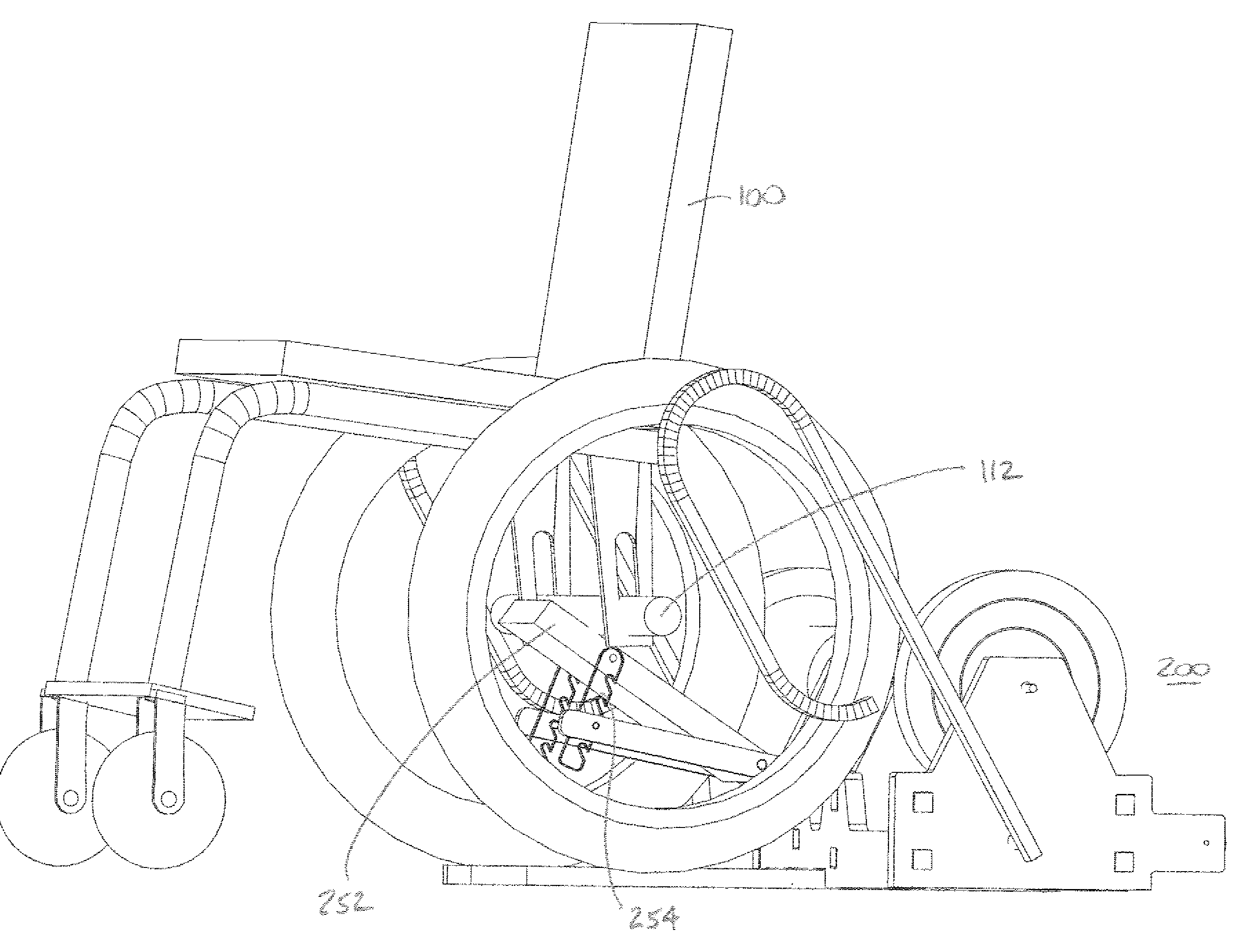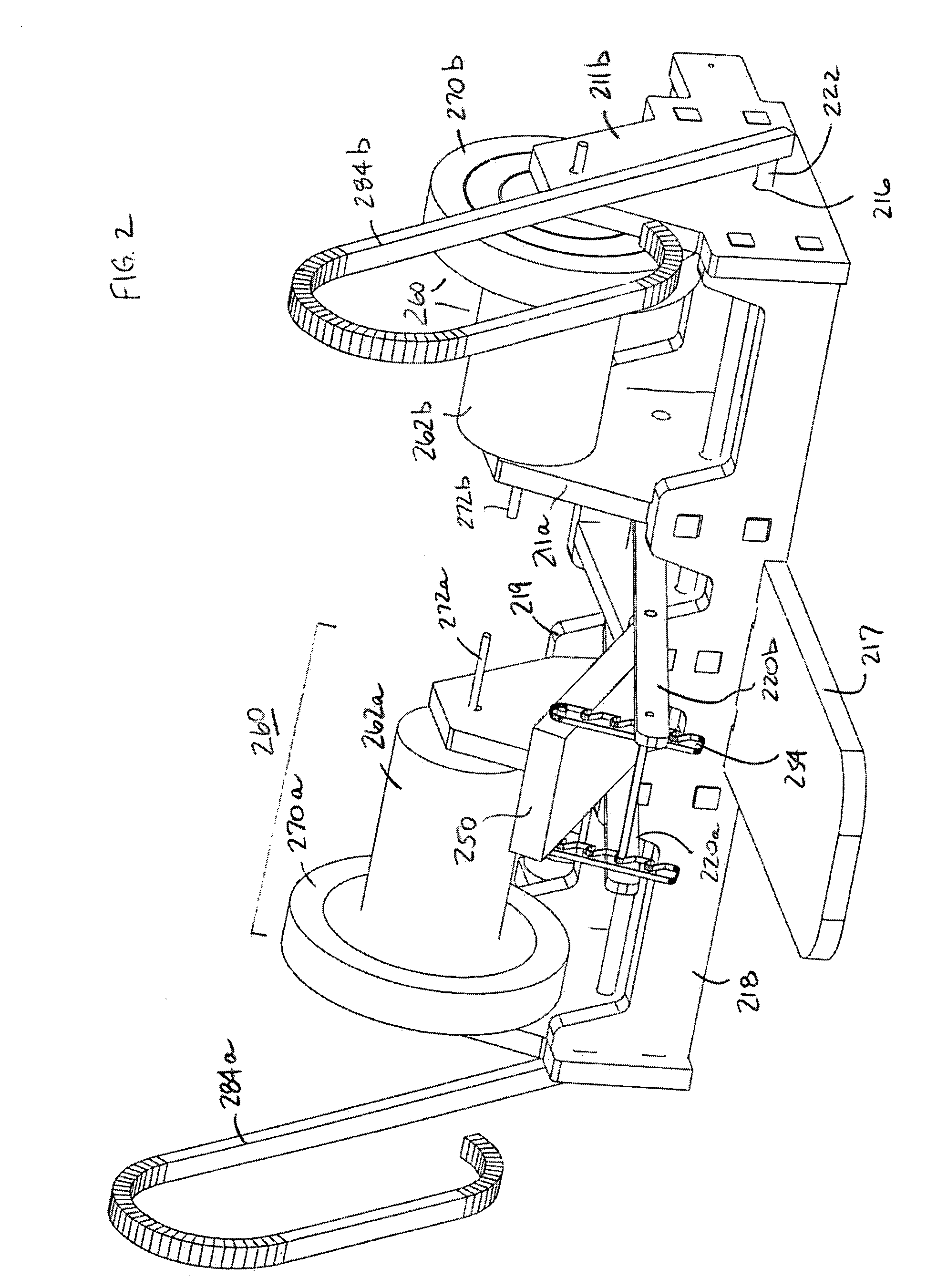Apparatus and method for wheelchair aerobic stationary exercise
a technology for stationary exercise and wheelchairs, applied in sport apparatuses, gymnastic exercise, therapy exercise, etc., can solve the problems of large footprint, inability to provide independent wheelchair wheel operation, and expense of devices
- Summary
- Abstract
- Description
- Claims
- Application Information
AI Technical Summary
Benefits of technology
Problems solved by technology
Method used
Image
Examples
example
[0080]Olympic weights have a thin circular disk with the bulk of the cast iron mass as a widened perimeter ring, as would be a design option for optimized flywheels. In this example, two 35 Olympic weights could be used in lieu of two 501b weights of the same diameter, as their rotational inertias are equivalent.
[0081]A typical total flywheel inertial mass is provided to approximate 200 pounds of translational mass. This mass accommodates the average wheelchair user and wheelchair weight. The device uses a concept of equivalent inertia, but is also able to provide that equivalent inertia with a relatively low flywheel mass because of the inertial characteristics of the flywheels. For example, the 200 pounds of translational mass can typically be approximated with total flywheel mass of 70 to 100 pounds, depending upon the diameter and shape of the flywheels and the diameter of the wheel engagement means (contact wheel) which determine the rotational speed of the connected flywheels ...
PUM
 Login to View More
Login to View More Abstract
Description
Claims
Application Information
 Login to View More
Login to View More - R&D
- Intellectual Property
- Life Sciences
- Materials
- Tech Scout
- Unparalleled Data Quality
- Higher Quality Content
- 60% Fewer Hallucinations
Browse by: Latest US Patents, China's latest patents, Technical Efficacy Thesaurus, Application Domain, Technology Topic, Popular Technical Reports.
© 2025 PatSnap. All rights reserved.Legal|Privacy policy|Modern Slavery Act Transparency Statement|Sitemap|About US| Contact US: help@patsnap.com



